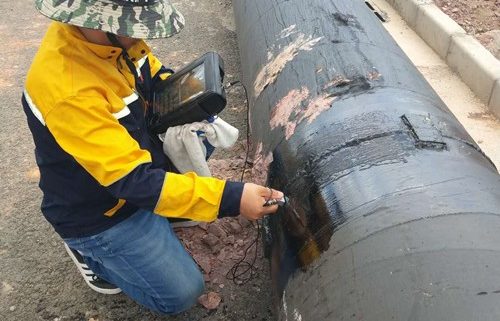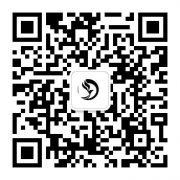Nondestructive testing of welded pipe fittings: NDT
Nondestructive testing of welded pipe fittings: NDT
Definition of NDT for welded pipe fittings: NDT refers to a testing method for materials or workpieces that does not damage or affect their future performance or use.
NDT can find defects in the interior and surface of materials or workpieces, measure the geometric features and dimensions of workpieces, and determine the internal composition, structure, physical properties and state of materials or workpieces.
NDT can be applied to product design, material selection, processing and manufacturing, finished product inspection, in-service inspection (maintenance), etc. It can play an optimal role between quality control and cost reduction. NDT also helps to ensure the safe operation and/or effective use of products.
Types of nondestructive testing methods NDT contains many effective methods.
According to the physical principle or different detection objects and purposes, NDT can be roughly divided into the following methods:
A) radiation method: -(x-ray and gamma-ray radiographic testing); -Radiographic testing; -Computed tomographic testing; —— neutron radiographic testing.
B) acoustic method: -ultrasonic testing; -acoustic emission testing; -electromagnetic acoustic testing.
C) electromagnetic method: -eddy current testing; -flux leakage testing.
D) surface method: -magnetic particle testing; -(liquid) penetrant testing; -visual testing.
E) leakage method: -leak testing.
F) infrared method: -infrared thermal imaging testing.
Conventional NDT methods are widely used and mature NDT methods at present, which are: radiographic testing (RT), ultrasonic testing (UT), eddy current testing (ET), magnetic particle testing (MT) and penetrant testing (PT).
Some NDT methods will produce or incidentally produce substances such as radioactive radiation, electromagnetic radiation, ultraviolet radiation, toxic materials, flammable or volatile materials, dust, etc., which will harm human body to varying degrees. Therefore, when applying NDT, necessary protection and monitoring should be carried out according to the types of harmful substances that may be produced, and necessary labor protection measures should be taken for relevant NDT personnel.
Each NDT method has its own capabilities and limitations, and the detection probability of defects by each method is neither 100% nor completely the same. For example, radiographic testing and ultrasonic testing, the testing results of the same object are not completely consistent.
In the conventional NDT method, radiographic testing and ultrasonic testing are mainly used to detect the defects inside the tested object; Eddy current testing and magnetic particle testing are used to detect defects on the surface and near surface of the tested object; Penetration testing is only used to detect the defects of the surface opening of the tested object.
Radiographic inspection is suitable for detecting volumetric defects in the inspected object, such as porosity, slag inclusion, shrinkage cavity, porosity, etc. Ultrasonic testing is suitable for detecting area defects in the tested object, such as cracks, white spots, delamination and incomplete fusion in welds.
Radiographic inspection is often used to inspect metal castings and welds, and ultrasonic inspection is often used to inspect metal forgings, profiles and welds. Ultrasonic inspection is usually superior to radiographic inspection in detecting defects in welds.
Radiographic inspection (RT)
Scope of competence:
A) defects such as incomplete penetration, porosity and slag inclusion in the weld can be detected;
B) defects such as shrinkage cavity, slag inclusion, porosity, looseness and hot cracking in castings can be detected;
C) can determine the plane projection position and size of the detected defects, as well as the types of defects.
Note: The transillumination thickness of radiographic inspection is mainly determined by ray energy. For steel materials, the transmission thickness of 400 kV X-ray can reach about 85 mm, cobalt 60 gamma ray can reach about 200 mm, and the transmission thickness of 9 MeV high-energy X-ray can reach about 400 mm..
Limitations:
A) it is difficult to detect the defects in forgings and profiles;
B) it is difficult to detect the fine cracks and incomplete fusion in the weld.
Ultrasonic testing (UT)
Scope of competence:
A) defects such as cracks, white spots, delamination, large or dense slag inclusion in forgings can be detected;
Note 1: Internal defects or defects parallel to the surface can be detected by direct technology. For steel materials, the maximum effective detection depth can reach about 1 m;
Note 2: Non-parallel defects or surface defects can be detected by oblique or surface wave technology.
B) It can detect defects such as cracks, incomplete penetration, incomplete fusion, slag inclusion, porosity, etc. existing in the weld;
Note: Oblique shooting technique is usually used. If 2.5 MHz ultrasonic wave is used to detect steel weld, the maximum effective detection depth is about 200 mm
C) defects such as cracks, folds, delamination and flaky slag inclusion in profiles (including plates, pipes, bars and other profiles) can be detected;
Note: Generally, liquid immersion technology is used, and focusing oblique shooting technology can also be used for pipes or bars.
D) It can detect the defects such as hot crack, cold crack, looseness, slag inclusion, shrinkage cavity, etc. in castings (such as steel castings with simple shape, flat surface or machined and repaired ductile iron);
E) the coordinate position and relative size of the detected defects can be determined, but it is difficult to determine the types of defects.
Limitations:
A) it is difficult to detect defects in coarse-grained materials (such as castings and welds of austenitic steel); B) It is difficult to detect defects in workpieces with complex shapes or rough surfaces.
Eddy current testing (ET)
Scope of competence:
A) it can detect defects such as cracks, folds, pits, inclusions and porosity on the surface and/or near the surface of conductive materials (including ferromagnetic and non-ferromagnetic metal materials, graphite, etc.);
B) The coordinate position and relative size of the detected defects can be determined, but it is difficult to determine the types of defects.
Limitations:
A) not applicable to non-conductive materials;
B) the internal defects existing in the far surface of the conductive material cannot be detected;
C) it is difficult to detect the defects on or near the surface of a workpiece with complex shape.
Magnetic particle inspection (MT)
Scope of competence:
A) it can detect the defects such as cracks, folds, interlayers, inclusions and air holes on the surface and/or near the surface of ferromagnetic materials (including forgings, castings, welds, profiles and other workpieces);
B) It can determine the position, size and shape of the detected defect on the surface of the inspected object, but it is difficult to determine the depth of the defect.
Limitations:
A) it is not suitable for non-ferromagnetic materials, such as austenitic steel, copper, aluminum and other materials;
B) internal defects existing in the far surface of ferromagnetic materials cannot be detected.
Penetration testing (PT)
Scope of competence:
A) defects such as open cracks, folds, looseness, pinholes and the like on the surfaces of metal materials and dense nonmetal materials can be detected;
B) It can determine the position, size and shape of the detected defect on the surface of the inspected object, but it is difficult to determine the depth of the defect.
Limitations:
A) it is not suitable for loose porous materials;
B) defects existing in the material interior and/or near the surface without opening can not be detected
Decho is a professional supplier on pipe fittings , if you have any request , pls donot hesitate to contact us by email [email protected]




